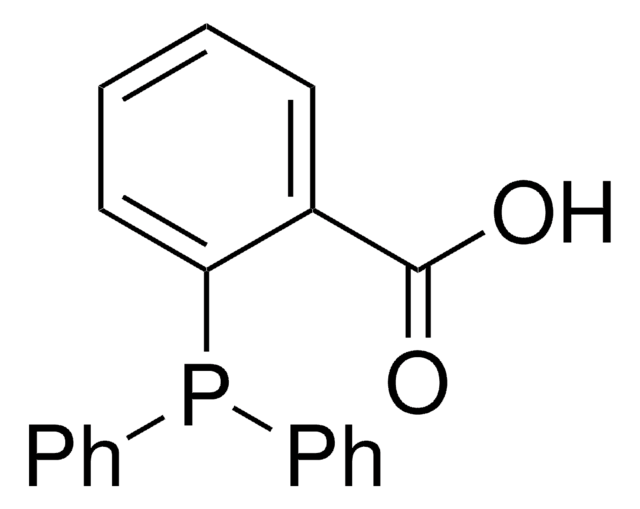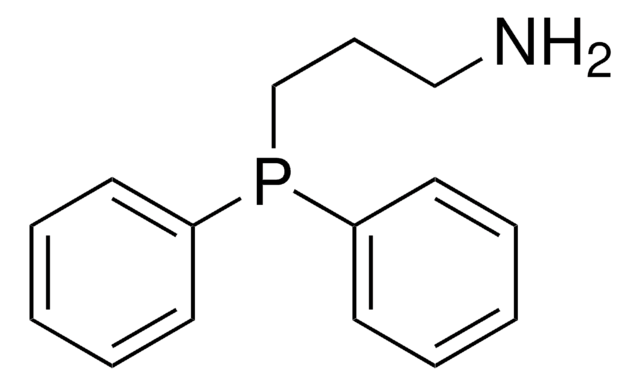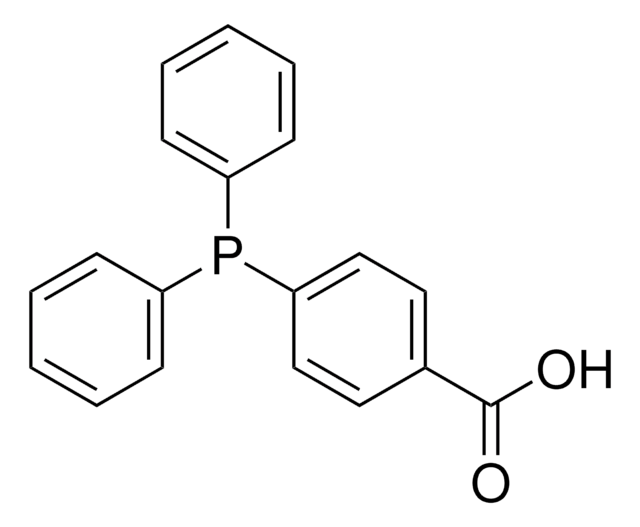715034
3-(Diphenylphosphino)propionic acid
97%
Synonyme(s) :
(2-Carboxyethyl)diphenylphosphine, 4,4-Diphenyl-4-phosphabutanoic acid
About This Item
Produits recommandés
Pureté
97%
Forme
solid
Capacité de réaction
reaction type: Buchwald-Hartwig Cross Coupling Reaction
reaction type: Heck Reaction
reaction type: Hiyama Coupling
reaction type: Negishi Coupling
reaction type: Sonogashira Coupling
reaction type: Stille Coupling
reaction type: Suzuki-Miyaura Coupling
Pertinence de la réaction
reagent type: ligand
Pf
130-134 °C
Groupe fonctionnel
phosphine
Chaîne SMILES
OC(=O)CCP(c1ccccc1)c2ccccc2
InChI
1S/C15H15O2P/c16-15(17)11-12-18(13-7-3-1-4-8-13)14-9-5-2-6-10-14/h1-10H,11-12H2,(H,16,17)
Clé InChI
OTSIFUHGOBFOTH-UHFFFAOYSA-N
Application
- Organocatalytic asymmetric aziridination of imines and diazo compounds
- Phosphine-mediated conversion of azides into diazo compounds
- Preparation of rhodium catalysts for hydroformylation
- Synthesis of reagents for the Mitsunobu reaction
Mention d'avertissement
Warning
Mentions de danger
Conseils de prudence
Classification des risques
Eye Irrit. 2 - Skin Irrit. 2 - STOT SE 3
Organes cibles
Respiratory system
Code de la classe de stockage
11 - Combustible Solids
Classe de danger pour l'eau (WGK)
WGK 3
Point d'éclair (°F)
Not applicable
Point d'éclair (°C)
Not applicable
Certificats d'analyse (COA)
Recherchez un Certificats d'analyse (COA) en saisissant le numéro de lot du produit. Les numéros de lot figurent sur l'étiquette du produit après les mots "Lot" ou "Batch".
Déjà en possession de ce produit ?
Retrouvez la documentation relative aux produits que vous avez récemment achetés dans la Bibliothèque de documents.
Notre équipe de scientifiques dispose d'une expérience dans tous les secteurs de la recherche, notamment en sciences de la vie, science des matériaux, synthèse chimique, chromatographie, analyse et dans de nombreux autres domaines..
Contacter notre Service technique









